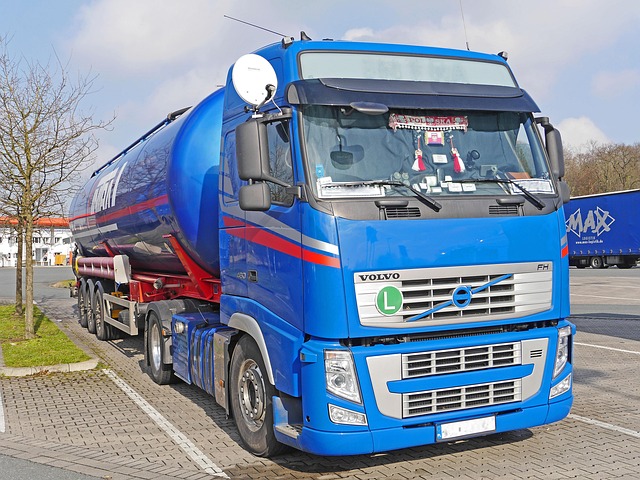Looking to register your car in California? This comprehensive guide walks you through every step, from understanding eligibility requirements to receiving your registered vehicle title and license plate. We cover essential documents, scheduling and completing the DMV’s VIN verification, submitting applications, and paying fees. Ensure a smooth process by following these clear instructions tailored for California residents.
- Understand Eligibility Requirements for Car Registration in California
- Gather Necessary Documents for Your Vehicle
- Schedule and Complete DMV Vin Verification
- Submit Application and Pay Fees for Car Registration
- Receive Your Registered Vehicle Title and License Plate
Understand Eligibility Requirements for Car Registration in California

Before you begin the registration process, it’s crucial to understand the eligibility requirements set by the California Department of Motor Vehicles (DMV). To register your car in California, your vehicle must meet certain criteria. One essential step is ensuring that the vehicle has passed all required safety and emissions tests. This includes a DMV vin verification process, which checks the vehicle identification number (VIN) to confirm its authenticity and history.
Additionally, you’ll need proof of insurance and ownership, along with the appropriate fees. A mobile vin inspection or a vin inspection by a professional verifier can facilitate this verification, ensuring that your car is safe and legal for California’s roads. These methods provide convenient alternatives to traditional DMV visits, offering a smoother registration experience for out-of-state residents or those with busy schedules.
Gather Necessary Documents for Your Vehicle

Before you begin the registration process, it’s crucial to gather all the essential documents for your vehicle. This includes your vehicle identification number (VIN), which can usually be found on the vehicle’s license plate or in its owner’s manual. In California, the Department of Motor Vehicles (DMV) requires a VIN verification as part of the registration process. This step ensures that the vehicle matches the documentation and helps prevent theft.
Additionally, you’ll need proof of insurance, a valid driver’s license, and registration from your previous state (if applicable). Some residents opt for a convenient mobile vin verification or mobile vin inspection service to streamline this initial step. These services provide quick and accurate VIN checks using advanced technology, often accessible right from your smartphone.
Schedule and Complete DMV Vin Verification

After gathering your required documents and ensuring your vehicle meets all necessary standards, it’s time to schedule and complete the DMV VIN verification process. This crucial step involves verifying the accuracy of your vehicle’s Vehicle Identification Number (VIN) through an inspection by a designated official. You can either visit a local California DMV office or, for added convenience, utilize a mobile VIN verifier service that comes to you. These professional services offer a similar level of scrutiny as in-person inspections, ensuring your vehicle passes the vin inspection with flying colors.
By choosing a mobile vin verification option, you save time and effort while maintaining compliance with state regulations. This alternative approach is particularly beneficial for individuals who have limited mobility or live in remote areas. With a simple appointment booking, a qualified technician will arrive at your location to perform a thorough VIN inspection, providing immediate results and peace of mind that your vehicle registration process is on track.
Submit Application and Pay Fees for Car Registration

After gathering all necessary documents, it’s time to submit your application and fees for car registration at the California Department of Motor Vehicles (DMV). You’ll need to complete Form SM-149, which is the Application for Title and Registration. This form requires detailed information about your vehicle, including its make, model, year, and VIN number, which should be verified through a DMV-approved vin inspection or mobile vin verifier.
Ensure you include the appropriate fees along with your application. The cost of registration varies depending on the type of vehicle and its age. You can pay by cash, check, or credit card. Once processed, the DMV will issue a registration certificate, and you’ll receive your official car tags, marking the successful completion of the registration process.
Receive Your Registered Vehicle Title and License Plate

After completing the registration process with the California DMV, including providing proof of insurance and paying the necessary fees, you will receive your official Registered Vehicle Title and License Plate. This crucial step ensures that your vehicle is legally recognized in the state. The title serves as a legal document proving ownership, while the license plate identifies your vehicle on California roads.
Remember, before operating your car, it’s essential to display these documents correctly. Additionally, ensure your vehicle passes the required DMV VIN verification, which can be done through traditional inspection centers or even with a mobile vin verifier for added convenience. This process checks that your vehicle’s unique Vehicle Identification Number (VIN) is accurate and matches the details on record.
Registering a car in California involves understanding eligibility requirements, gathering essential documents, completing a mandatory DMV VIN verification process, submitting an application with relevant fees, and finally receiving your registered vehicle title and license plate. This straightforward procedure ensures that all vehicles on California roads meet safety and identification standards, promoting responsible ownership and road safety. Remember to stay organized and ensure all documents are in order for a smooth registration experience.
